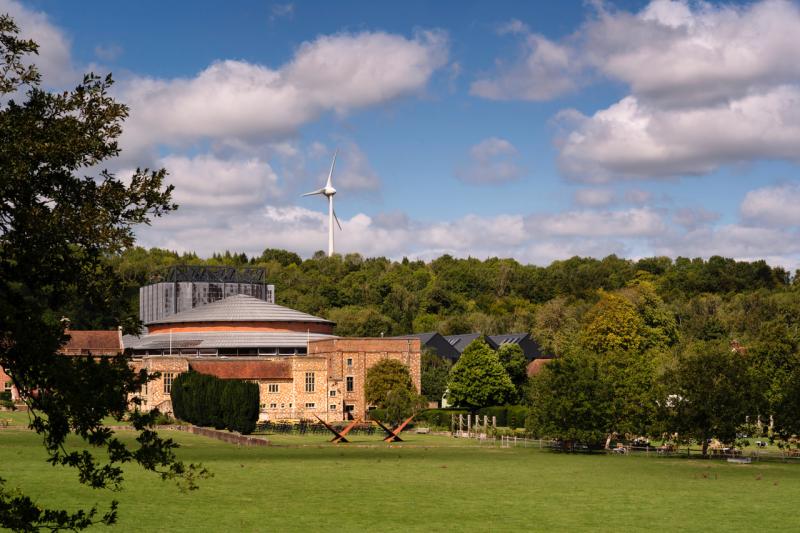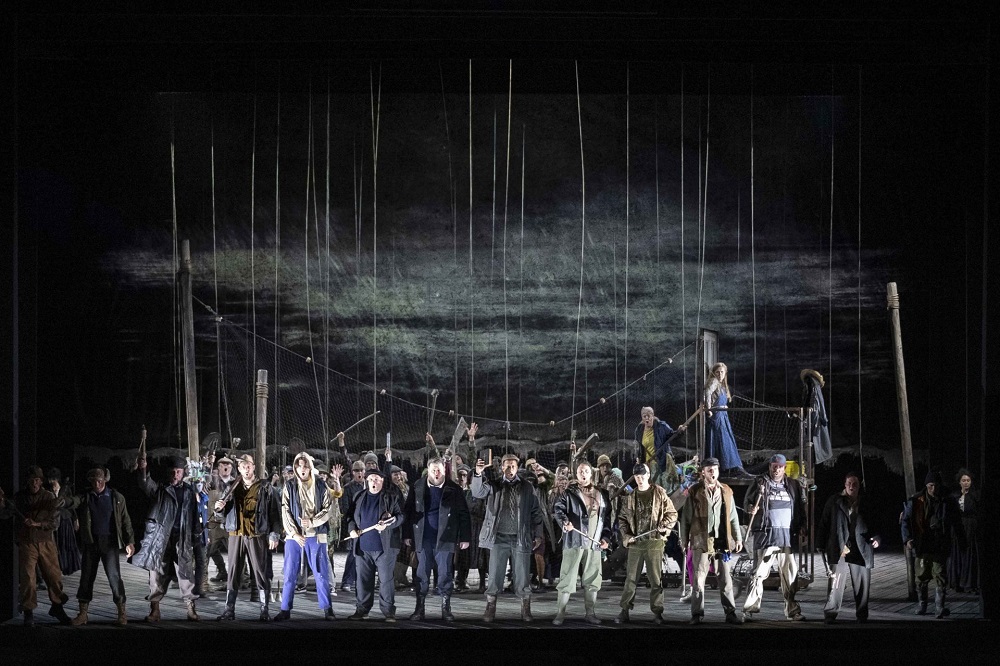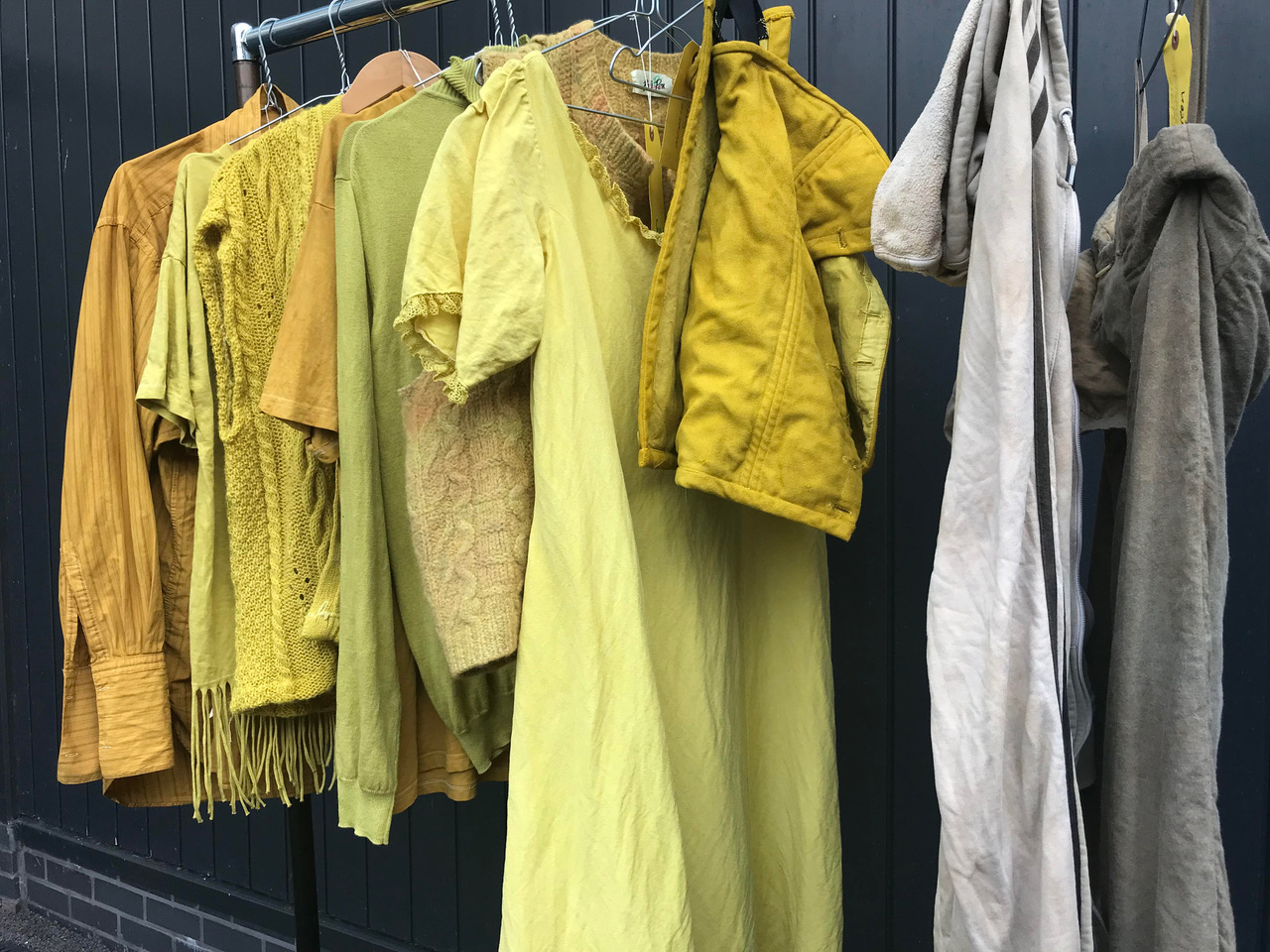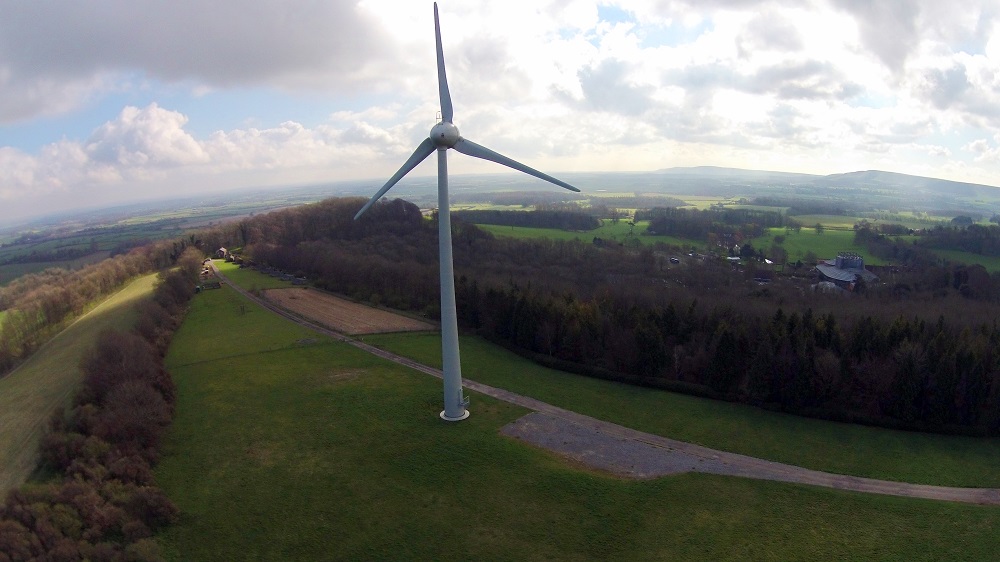First Persons: Glyndebourne's sustainability advisers Sara and Jeremy Eppel on creating eco-friendly opera | reviews, news & interviews
First Persons: Glyndebourne's sustainability advisers Sara and Jeremy Eppel on creating eco-friendly opera
First Persons: Glyndebourne's sustainability advisers Sara and Jeremy Eppel on creating eco-friendly opera
This season's production of 'The Wreckers' leads the way towards net zero

Like the beacons saving ships from the Cornish rocks in Ethel Smyth’s opera, The Wreckers, which opened this year’s Glyndebourne Festival, the Sussex opera house has itself become a beacon of more environmentally sustainable opera. In 2021, with the COP 26 Climate Change Conference raising the profile of businesses’ efforts to cut their carbon emissions, Glyndebourne was a pioneer among opera houses and joined the global Race to Zero.
Building on the work started a decade ago with the installation of a wind turbine, and thanks to the leadership of Gus Christie (Executive Chairman) and Sarah Hopwood (Managing Director), Glyndebourne committed to halving its direct carbon emissions (from a 2019 baseline) by 2030 and to reaching net zero by 2050.
It’s a complex operation, creating an opera, which means there are many, and varied opportunities for making improvements: heating, cooling and lighting the building; the environmental impact of different materials used in the opera productions (wood, steel, polystyrene) and in the costumes (fabrics, dyes, sequins, wigs, make-up); transport options for taking operas on tour; reducing waste by re-using existing productions and props. And then there is the impact of the audience: the food in the restaurants, merchandise, and audience transport choices to get down to Sussex.  Creating operas which are environmentally sustainable has been the motivation behind Glyndebourne’s work with collaborators in the cultural sector in the development of the Theatre Green Book. In 2022 half of all Glyndebourne’s productions were aiming to achieve the Sustainable Productions baseline standards. In the event the new production of Ethel Smyth’s The Wreckers (scene pictured above by Richard Hubert Smith) went significantly beyond that level. With the enthusiastic approval of the Director, Melly Still and the whole production team, environmental solutions were found at every stage and documented by the technical teams. Enthusiasm within the production team extended to foraging in charity shops for costumes and beach combing with Surfers against Sewage to salvage flotsam and jetsam to use as set dressing for the opera, which is set in a remote Cornish fishing village.
Creating operas which are environmentally sustainable has been the motivation behind Glyndebourne’s work with collaborators in the cultural sector in the development of the Theatre Green Book. In 2022 half of all Glyndebourne’s productions were aiming to achieve the Sustainable Productions baseline standards. In the event the new production of Ethel Smyth’s The Wreckers (scene pictured above by Richard Hubert Smith) went significantly beyond that level. With the enthusiastic approval of the Director, Melly Still and the whole production team, environmental solutions were found at every stage and documented by the technical teams. Enthusiasm within the production team extended to foraging in charity shops for costumes and beach combing with Surfers against Sewage to salvage flotsam and jetsam to use as set dressing for the opera, which is set in a remote Cornish fishing village.
Early indications show good results for The Wreckers:
● 28% of timber used in construction came from recycled sources
● 50% of the steel used has gone back into Glyndebourne’s stock, including the stage revolve
● Only 4% of costumes are new – the remainder from Glyndebourne’s existing stock or local charity shops
● All fabric dyeing was done using natural dye from plants grown at Glyndebourne in a new, dedicated dye garden
● 92% of props had a previous life – reuse is the most sustainable solution, and
● Only 3% of props will be disposed of.
For a first effort, these are impressive results. The biggest challenge is engaging a supply chain that has up to now focused only on artistic excellence, with little if any thought about the environmental impacts of their choices. This mindset will only change when production teams are led from the top by directors who are aware of environmental impacts, and when practical tools like the Theatre Green Book are followed throughout the production process. (Selection of costumes mad eusing natural dyes pictured below) Some materials will still present challenges until the supply chain comes up with alternatives. Lightweight and flexible props made of polystyrene have been a godsend for many operas but are environmentally damaging and alternatives are hard to find. Reusing the props, with a make-over, is the best option for now. Similarly, lavish costumes with glittering sequins look great in the right production, but the best “disposal” options will be repeated re-use and sharing with other opera companies.
Some materials will still present challenges until the supply chain comes up with alternatives. Lightweight and flexible props made of polystyrene have been a godsend for many operas but are environmentally damaging and alternatives are hard to find. Reusing the props, with a make-over, is the best option for now. Similarly, lavish costumes with glittering sequins look great in the right production, but the best “disposal” options will be repeated re-use and sharing with other opera companies.
One of the enjoyable features of the Glyndebourne Festival opera experience is the 90-minute dinner interval, for picnics or indoor dining. In 2022 Glyndebourne bravely revised its dining options so that one of its three restaurants is offering a largely plant-based menu, in a bid to cut the carbon footprint of its meat-based menus (image below by Steve Groves).
 It is too early to tell how enthusiastically the audience is greeting this change, but all credit to Glyndebourne and its chefs for moving away from a traditional carvery menu in at least one of its highly reputed restaurants. Recorked UK is benefitting from Glyndebourne’s used wine and champagne corks, and a partnership with OLIO ensures surplus food is shared, not thrown away. Bottled water is being phased out on site, replaced with water from their natural spring.
It is too early to tell how enthusiastically the audience is greeting this change, but all credit to Glyndebourne and its chefs for moving away from a traditional carvery menu in at least one of its highly reputed restaurants. Recorked UK is benefitting from Glyndebourne’s used wine and champagne corks, and a partnership with OLIO ensures surplus food is shared, not thrown away. Bottled water is being phased out on site, replaced with water from their natural spring.
Since its beginnings in 1934 Glyndebourne has encouraged its audience to use sustainable transport, offering a coach service off the London to Lewes train. Most of the audience arrives by car, and in 2022, mindful of the increase in electric car ownership, Glyndebourne increased to 32 the number of available vehicle-recharging points. Audiences have welcomed the expansion, judging by the number of chargers in use at each performance we have attended this year.
Glyndebourne has also been working for some years to cut the impact of the opera building. They made an overt statement of intent when they installed a wind turbine on the hill above the site in 2012 (pictured below). There was local resistance, much talk of “blighting the Downs” but with successful local engagement, and given the support of David Attenborough, objections were in the end overcome. Over the past decade the wind turbine has single-handedly cut Glyndebourne’s electricity bills, halved their carbon emissions, and provided 105% of electricity needs. Glyndebourne also has a renewable energy supplier for electricity purchased when the wind isn’t blowing, and reduces demand using cost-effective measures, such as adjusting the air conditioning, installing LEDs and lighting movement sensors.  But electricity isn’t the only major energy use: there are also heating needs, which have proved more challenging. The fabric of the opera building itself, built in the 1990s, leaves a lot to be desired by today’s energy efficiency standards. Newer gas boilers are reducing gas usage, but to achieve a net zero goal the single glazed windows will need upgrading, shading improved, and renewable energy heat sources will be needed. All of this is work in progress if the finances can be made to work.
But electricity isn’t the only major energy use: there are also heating needs, which have proved more challenging. The fabric of the opera building itself, built in the 1990s, leaves a lot to be desired by today’s energy efficiency standards. Newer gas boilers are reducing gas usage, but to achieve a net zero goal the single glazed windows will need upgrading, shading improved, and renewable energy heat sources will be needed. All of this is work in progress if the finances can be made to work.
In 2018, when Glyndebourne measured their operational carbon impacts they found waste, gas and electricity emissions were each contributing around 30% to the total. A focus on cutting waste has achieved an 81% reduction in absolute waste tonnage (2009-2020), with the residual going for heat recovery, and zero to landfill.
In practical terms committing to halve carbon emissions by 2030, covering not only the summer festival but also the autumn tour, would involve either offsetting excess emissions – for example by buying carbon credits for certified tree planting projects – or directly investing in carbon reduction solutions at Glyndebourne itself. This year Glyndebourne is investing an additional £25 per tonne of net operational emissions into new emission-reduction measures covering 2023. The carbon impacts of taking the operas out on tour each autumn will certainly be offset through this route until sustainable transport solutions can be found.
The thoroughness of Glyndebourne’s approach demonstrates both its commitment to reduce its impacts, but also the wealth of ideas brought forward by the company’s staff, organised into a Sustainability Group. Nurturing this enthusiasm and continuing to invest for the zero-carbon goal will ensure Glyndebourne achieves its ambitions for sustainably produced opera. Others in the opera and theatre sector need to take note and follow.
- More about the Theatre Green Book
- More about the Race to Zero
- The main Glyndebourne season comes to an end on Sunday 28 August. Tour begins there on 8 October
- Read opera reviews on theartsdesk
Explore topics
Share this article
Add comment
The future of Arts Journalism
You can stop theartsdesk.com closing!
We urgently need financing to survive. Our fundraising drive has thus far raised £49,000 but we need to reach £100,000 or we will be forced to close. Please contribute here: https://gofund.me/c3f6033d
And if you can forward this information to anyone who might assist, we’d be grateful.

Subscribe to theartsdesk.com
Thank you for continuing to read our work on theartsdesk.com. For unlimited access to every article in its entirety, including our archive of more than 15,000 pieces, we're asking for £5 per month or £40 per year. We feel it's a very good deal, and hope you do too.
To take a subscription now simply click here.
And if you're looking for that extra gift for a friend or family member, why not treat them to a theartsdesk.com gift subscription?
more Opera
 Orpheus and Eurydice, Opera Queensland/SCO, Edinburgh International Festival 2025 review - dazzling, but distracting
Eye-popping acrobatics don’t always assist in Gluck’s quest for operatic truth
Orpheus and Eurydice, Opera Queensland/SCO, Edinburgh International Festival 2025 review - dazzling, but distracting
Eye-popping acrobatics don’t always assist in Gluck’s quest for operatic truth
 MARS, Irish National Opera review - silly space oddity with fun stretches
Cast, orchestra and production give Jennifer Walshe’s bold collage their all
MARS, Irish National Opera review - silly space oddity with fun stretches
Cast, orchestra and production give Jennifer Walshe’s bold collage their all
 Káťa Kabanová, Glyndebourne review - emotional concentration in a salle modulable
Janáček superbly done through or in spite of the symbolism
Káťa Kabanová, Glyndebourne review - emotional concentration in a salle modulable
Janáček superbly done through or in spite of the symbolism
 Buxton International Festival 2025 review - a lavish offering of smaller-scale work
Allison Cook stands out in a fascinating integrated double bill of Bernstein and Poulenc
Buxton International Festival 2025 review - a lavish offering of smaller-scale work
Allison Cook stands out in a fascinating integrated double bill of Bernstein and Poulenc
 Tosca, Clonter Opera review - beauty and integrity in miniature
Happy surprises and a convincing interpretation of Puccini for today
Tosca, Clonter Opera review - beauty and integrity in miniature
Happy surprises and a convincing interpretation of Puccini for today
 Hamlet, Buxton International Festival review - how to re-imagine re-imagined Shakespeare
Music comes first in very 19th century, very Romantic, very French operatic creation
Hamlet, Buxton International Festival review - how to re-imagine re-imagined Shakespeare
Music comes first in very 19th century, very Romantic, very French operatic creation
 Falstaff, Glyndebourne review - knockabout and nostalgia in postwar Windsor
A fat knight to remember, and snappy stagecraft, overcome some tedious waits
Falstaff, Glyndebourne review - knockabout and nostalgia in postwar Windsor
A fat knight to remember, and snappy stagecraft, overcome some tedious waits
 Salome, LSO, Pappano, Barbican review - a partnership in a million
Asmik Grigorian is vocal perfection in league with a great conductor and orchestra
Salome, LSO, Pappano, Barbican review - a partnership in a million
Asmik Grigorian is vocal perfection in league with a great conductor and orchestra
 Semele, Royal Opera review - unholy smoke
Style comes and goes in a justifiably dark treatment of Handelian myth
Semele, Royal Opera review - unholy smoke
Style comes and goes in a justifiably dark treatment of Handelian myth
 Le nozze di Figaro, Glyndebourne review - perceptive humanity in period setting
Mostly glorious cast, sharp ideas, fussy conducting
Le nozze di Figaro, Glyndebourne review - perceptive humanity in period setting
Mostly glorious cast, sharp ideas, fussy conducting
 Fidelio, Garsington Opera review - a battle of sunshine and shadows
Intimacy yields to spectacle as Beethoven's light of freedom triumphs
Fidelio, Garsington Opera review - a battle of sunshine and shadows
Intimacy yields to spectacle as Beethoven's light of freedom triumphs
 Dangerous Matter, RNCM, Manchester review - opera meets science in an 18th century tale
Big doses of history and didaction are injected into 50 minutes of music theatre
Dangerous Matter, RNCM, Manchester review - opera meets science in an 18th century tale
Big doses of history and didaction are injected into 50 minutes of music theatre

Comments
So heartening to read this